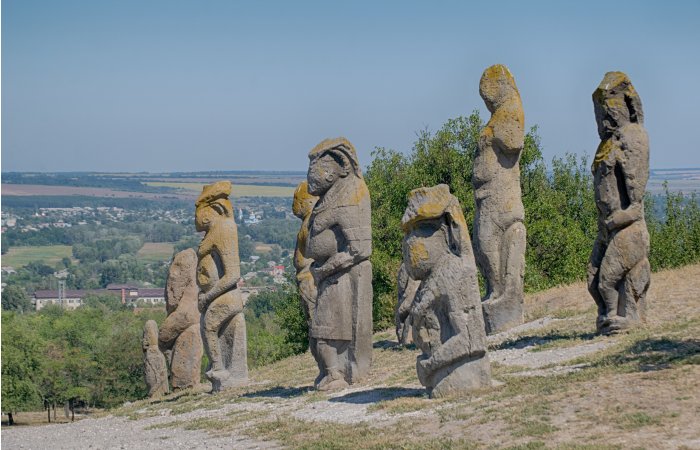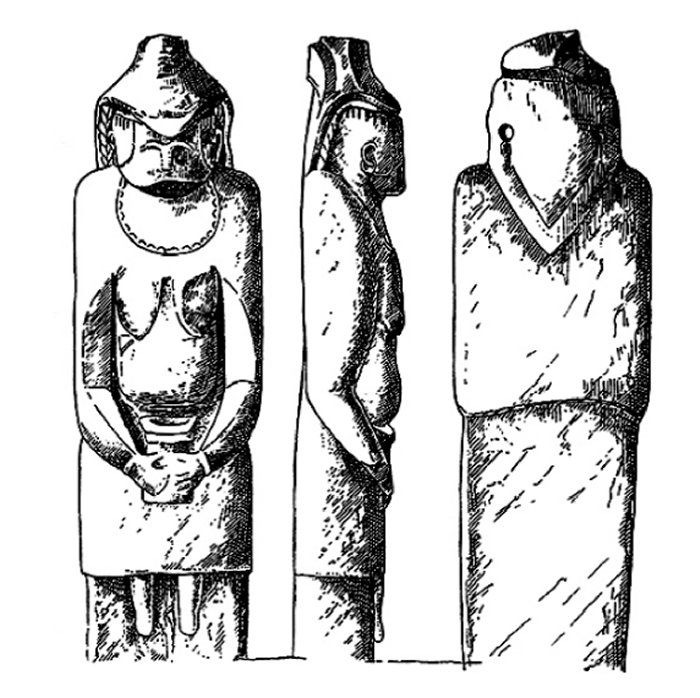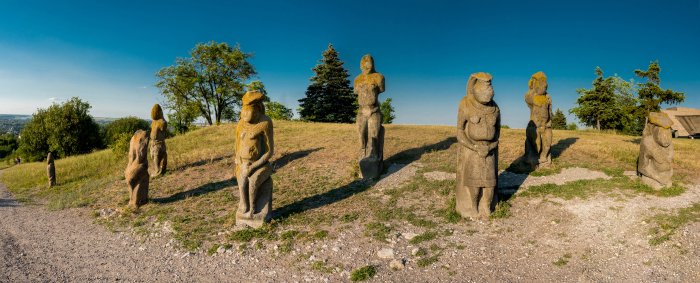Striking Ancient Stone Idols: The Forgotten Polovtsian Statues Of Eastern Europe
Ellen Lloyd – AncientPages.com - These enigmatic ancient stone statues, or "stone idols," as they are often called by locals, are almost unknown to the outside world.
The statues, known as the "Polovtsian statues," are found in large numbers spread across Russia, southern Siberia, eastern Ukraine, Germany, Central Asia, and Mongolia.
Polovtsian statues. Credit: Adobe Stock - Andrey
Many of the Polovtsian statues represent male warriors wearing helmets, armor, and weapons, like swords, bows, and quivers. Hats and purses can be seen on the female statues.
In 2008, a team of archaeologists and conservators from Poland and the Czech Republic undertook maintenance work on the Polovtsian anthropomorphic late medieval steles from the collection of the Veliklanadolskyi Forest Museum at Komsomolsky Podsiolok in East Ukraine.
Their goal was to prevent the degradation of the sculptures caused by environmental factors and human activities, as well as to restore the aesthetics of the statues.
The stele "baba 2" from the Veliko-Anadol Forest Museum (cf Pletneva, 1974a. 152. No.302. Illustration from "Monumental Polovtsian Statues in Eastern Europe: The Archaeology, Conservation and Protection" By Aneta Golebiowska-Tobiasz
Aneta Golebiowska-Tobiasz, a member of the team, became strongly aware of the cultural value of the monumental sculptures - barely known in the rest of Europe and decided to channel her efforts into research and the restoration of the stelae, which represent so majestically the cultural heritage of the Turkic people of the steppe zone of Eastern Europe.
De Gruyter Open has now published the "Monumental Polovtsian Statues in Eastern Europe. The Archaeology, Conservation and Protection" in its Open Access Book program, presenting the author's well-documented and illustrated history of the research on Cuman stone stelae.
"Stone statues, indigenous to the early Turks, appeared in the vast territory of the Asian steppes, from Southern Siberia to Central Asia and across the foothills of the Ural Mountains. The custom originated among Cumans in Eastern Europe.
The skill of erecting anthropomorphic stelae required proficiency in processing different kinds of stone and wood, and was characterized by artistic value of representations, as well as by the timeless aesthetics of the canon," researchers write in their book "Monumental Polovtsian Statues in Eastern Europe. The Archaeology, Conservation and Protection".
Polovtsian statues in Ukraine. Credit: Adobe Stock - fotomaster
The art of creating stelae had been known in many cultural circles before it had appeared among the Turkic peoples. The tradition of constructing monumental stone sculptures originated in the Bronze Age cultures of Central and Middle Asia around the 4th millennium B.C. The Kimmers and the Scythians later created anthropomorphic stelae.
Stone statues associated with the early Turks appeared in a vast territory of the Asian steppes that stretches from the Southern foothills of the Ural Mountains through Kazakhstan to Mongolia.
Their origin and cultural significance are interpreted in various ways, and still many issues associated with their construction remain unclear.
The book delves into the phenomenon of anthropomorphic sculptures in relation to the migration of the Turkic nomads from the perspective of an archaeologist and conservator.
With a visibly palpable passion, Gołębiowska-Tobiasz explores the diffusion of the stale evolution of their canon, addressing alongside the latest hypothesis of the sculptures being related to religious beliefs and their possible political significance.
The art of erecting stale disappeared rather abruptly with the fall of the Polovtsians and the rapid spread of Islam. This book will mark a new perspective for archaeologists and historians on the most versatile aspects of these imposing and yet neglected monuments.
"The book is not only innovative," says Igor Leonidovich Kyzlasov, Head of Medieval Archaeology at the Russian Academy of Sciences, and arguably, one of the finest scientists in this subject area, "but it also accurately documents the complex process, and the results of restoration and conservation of monuments."
Polovtsian statues in Ukraine. Credit: Adobe Stock - olyasolodenko
According to Past Horizons, "The Polovtsians conquered the area of the Azov steppes relatively early in the 11th century AD. The rich pastures and abundance of water in the new sprawling land under their control ensured the groups moved from nomadism towards seasonal horse pastoralism within a closed cycle of encampments.
In addition to favorable environmental conditions, the density of old kurgan cemeteries located in the watersheds of rivers played a crucial role.
The Polovtsians used these previously erected mounds as burial or cult places, often putting anthropomorphic statues on their summits. In this way, they used the already sacred spaces during both funeral ceremonies."
Hopefully, the forgotten and neglected Polovtsian statues will now be better preserved for future generations. It would be a great pity if valuable history was lost again.
Updated on March 20, 2024
Written by - Ellen Lloyd – AncientPages.com
Copyright © AncientPages.com All rights reserved. This material may not be published, broadcast, rewritten or redistributed in whole or part without the express written permission of AncientPages.com
More From Ancient Pages
-
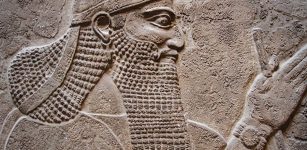 Unexpected Discovery Of 600 B.C Assyrian Palace In Shrine Destroyed By Isil Militants
Archaeology | Mar 2, 2017
Unexpected Discovery Of 600 B.C Assyrian Palace In Shrine Destroyed By Isil Militants
Archaeology | Mar 2, 2017 -
 Lost Knowledge Of Energy And Crystal Technology In Ancient Egypt
Ancient Technology | May 17, 2019
Lost Knowledge Of Energy And Crystal Technology In Ancient Egypt
Ancient Technology | May 17, 2019 -
 On This Day In History: Supernova Observed In The Constellation Cassiopeia Was Recorded – On August 4, 1181
News | Aug 4, 2016
On This Day In History: Supernova Observed In The Constellation Cassiopeia Was Recorded – On August 4, 1181
News | Aug 4, 2016 -
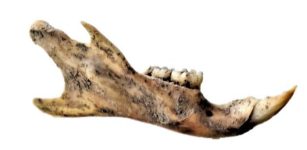 New DNA Study Reveals How The Black Rat Colonized Europe In The Roman And Medieval Periods
Archaeology | May 6, 2022
New DNA Study Reveals How The Black Rat Colonized Europe In The Roman And Medieval Periods
Archaeology | May 6, 2022 -
 Will-o’-the-wisp: Eerie Lights Over Swamps And Marshes That Frightened And Led People Astray
Featured Stories | Apr 23, 2020
Will-o’-the-wisp: Eerie Lights Over Swamps And Marshes That Frightened And Led People Astray
Featured Stories | Apr 23, 2020 -
 Magnificent Trumpington Cross And Highly Unusual Anglo-Saxon ‘Bed Burial’ In Cambridge Offer Unique Insight Into English Christianity
Archaeology | Feb 22, 2018
Magnificent Trumpington Cross And Highly Unusual Anglo-Saxon ‘Bed Burial’ In Cambridge Offer Unique Insight Into English Christianity
Archaeology | Feb 22, 2018 -
 Ymir – Primordial Norse Giant Whose Body Parts Formed The World
Featured Stories | Apr 5, 2018
Ymir – Primordial Norse Giant Whose Body Parts Formed The World
Featured Stories | Apr 5, 2018 -
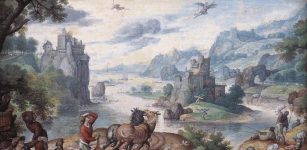 The Ancient ‘Flying Machines’ Of Icarus and Daedalus
Featured Stories | Aug 16, 2014
The Ancient ‘Flying Machines’ Of Icarus and Daedalus
Featured Stories | Aug 16, 2014 -
 Medicine in Antiquity: From Ancient Temples To Roman Logistics
Archaeology | Apr 13, 2018
Medicine in Antiquity: From Ancient Temples To Roman Logistics
Archaeology | Apr 13, 2018 -
 Mysterious Ancient Lost Civilization Of North America Had Interest In One Particular Constellation
Civilizations | Apr 17, 2018
Mysterious Ancient Lost Civilization Of North America Had Interest In One Particular Constellation
Civilizations | Apr 17, 2018 -
 Collapse Of Ancient Mayan Capital Linked To Drought – New Study Suggests
Archaeology | Aug 20, 2022
Collapse Of Ancient Mayan Capital Linked To Drought – New Study Suggests
Archaeology | Aug 20, 2022 -
 Mysterious Ancient Underground Chambers Beneath Jerusalem Baffle Archaeologists
Archaeology | Jul 6, 2020
Mysterious Ancient Underground Chambers Beneath Jerusalem Baffle Archaeologists
Archaeology | Jul 6, 2020 -
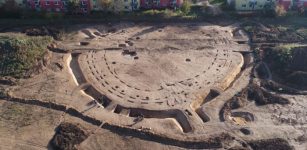 New Photos Of The Puzzling 7,000-Year-Old Circular Structure Near Prague And New Attempt To Solve The Neolithic Mystery
Archaeology | Apr 20, 2023
New Photos Of The Puzzling 7,000-Year-Old Circular Structure Near Prague And New Attempt To Solve The Neolithic Mystery
Archaeology | Apr 20, 2023 -
 On This Day In History: Ferdinand Magellan Reached Pacific And South American Strait – On Nov 28, 1520
News | Nov 28, 2016
On This Day In History: Ferdinand Magellan Reached Pacific And South American Strait – On Nov 28, 1520
News | Nov 28, 2016 -
 World’s Oldest Recorded Solar Eclipse Re-Writes History Of Egyptian Pharaohs
Archaeology | Oct 30, 2017
World’s Oldest Recorded Solar Eclipse Re-Writes History Of Egyptian Pharaohs
Archaeology | Oct 30, 2017 -
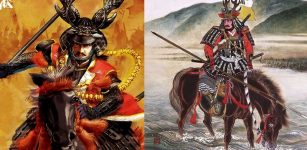 Spells And Magic Were Important To Samurai Warriors And Used In Battles
Featured Stories | Oct 7, 2017
Spells And Magic Were Important To Samurai Warriors And Used In Battles
Featured Stories | Oct 7, 2017 -
 On This Day In History: Scottish Hero William Wallace Who Met Horrible Death – Is Still Remembered – August 23, 1305
News | Aug 23, 2016
On This Day In History: Scottish Hero William Wallace Who Met Horrible Death – Is Still Remembered – August 23, 1305
News | Aug 23, 2016 -
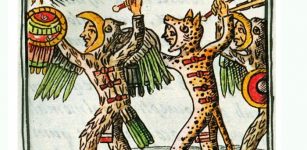 Florentine Codex: Remarkable Manuscripts About Life Of The Aztecs
Ancient History Facts | Nov 15, 2016
Florentine Codex: Remarkable Manuscripts About Life Of The Aztecs
Ancient History Facts | Nov 15, 2016 -
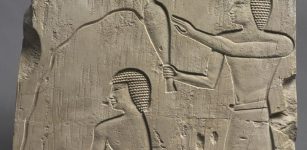 Daily Life Of Priests And Priestesses In Ancient Egypt
Ancient History Facts | Apr 5, 2018
Daily Life Of Priests And Priestesses In Ancient Egypt
Ancient History Facts | Apr 5, 2018 -
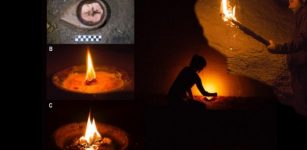 Paleolithic Cave Dwellers And Light They Could Get In Darkness
Archaeology | Jun 21, 2021
Paleolithic Cave Dwellers And Light They Could Get In Darkness
Archaeology | Jun 21, 2021

